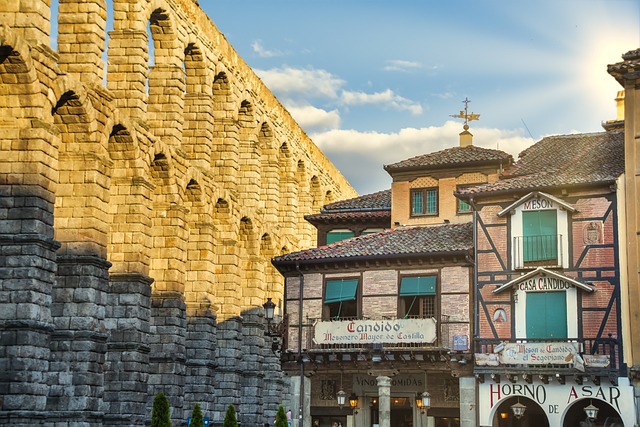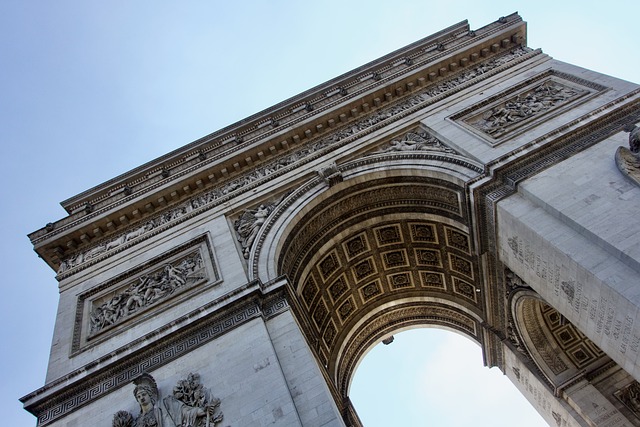As you stroll along the remnants of these historic sites, you can almost hear the clanging of swords and the shouts of soldiers preparing for battle. The walls, built with a blend of strength and artistry, tell tales of resilience and ingenuity. They were designed to withstand not just the forces of nature but also the ambitions of empires. Each brick is a testament to the craftsmanship of the Byzantine era, a time when Constantinople was the heart of the world.
What’s fascinating is how these walls have stood the test of time, much like the stories they hold. They’ve weathered storms, witnessed sieges, and now serve as a canvas for modern-day explorers. Walking along the remnants, you might find yourself pondering: what secrets do these stones hold? What dreams and fears did the people of Constantinople harbor as they looked out over the sea?
Guardians of the Past: Exploring the Ancient Sea Walls of Constantinople
Picture this: built in the 5th century, these fortifications were designed to protect the city from invaders, much like a knight in shining armor. They stretch for miles, a formidable barrier that once kept the Byzantine Empire safe from countless sieges. As you stroll along the remnants of these walls, you can almost hear the clashing swords and the cries of warriors echoing through the ages. Isn’t it fascinating how these structures have witnessed the rise and fall of empires, the ebb and flow of cultures?
But it’s not just their historical significance that captivates. The architecture itself is a marvel. With massive towers and intricate designs, the sea walls are like a giant puzzle, each piece telling a story of craftsmanship and dedication. Imagine the artisans who toiled under the sun, shaping each stone with care, knowing they were building something that would stand the test of time.
Echoes of History: The Untold Stories Behind Constantinople’s Maritime Walls
Picture this: the year is 1453, and the air is thick with tension. The Ottoman Empire is at the gates, and the walls are the last line of defense for the Byzantine Empire. Each stone in these walls has absorbed the echoes of clashing swords and desperate cries. It’s like a grand theater where history played out its most dramatic scenes. But it’s not just about warfare; these walls also tell tales of vibrant trade routes bustling with merchants from all corners of the world. Can you hear the chatter of traders haggling over spices and silks?
As you stroll along the waterfront, you might catch a glimpse of fishermen casting their nets, just as they did centuries ago. The maritime walls served as a lifeline, protecting not only the city but also the livelihoods of those who depended on the sea. It’s a reminder that history isn’t just about kings and battles; it’s about the everyday lives of people who thrived in the shadows of these mighty structures.
From Defense to Discovery: The Remarkable Journey of Constantinople’s Sea Walls
Originally constructed in the 5th century, the sea walls were like a fortress, standing tall against the waves and the threats of the outside world. Picture them as the city’s armor, shielding its treasures and culture from marauding forces. But as time marched on, these walls began to tell a different story. They witnessed the rise and fall of empires, the ebb and flow of trade, and the mingling of diverse cultures. It’s almost poetic, isn’t it?
As the city transitioned from a military stronghold to a vibrant hub of commerce and culture, the sea walls became more than just a barrier. They opened up pathways for exploration, inviting traders and travelers to discover the riches of the East. Think of them as the city’s welcoming arms, embracing the world while still holding onto its rich history.
Waves of Time: How the Remains of Constantinople’s Sea Walls Shape Our Understanding of History
When you think about it, these walls are like the pages of a history book, each crack and crevice holding tales of resilience and defeat. Built in the 5th century, they were designed to protect one of the most important cities in the world. Can you picture the bustling streets of Constantinople, where merchants and scholars mingled, all under the watchful gaze of these mighty structures? They stood tall against the waves, much like a guardian watching over its realm.
But what do these remnants tell us today? They offer a glimpse into the architectural genius of the Byzantine Empire. The engineering techniques used to construct these walls were revolutionary for their time, showcasing a blend of artistry and practicality. It’s like discovering a hidden treasure chest filled with the tools of a master craftsman. Each stone is a testament to the ingenuity of those who built them, and they challenge us to appreciate the complexity of historical narratives.
A Fortress by the Sea: The Enduring Legacy of Constantinople’s Maritime Defenses

Picture the mighty Theodosian Walls, stretching like a giant’s embrace around the city, fortified by towers that seemed to touch the sky. These weren’t just any walls; they were a strategic masterpiece, designed to protect the heart of an empire. The sea, with its unpredictable temperament, was both a friend and foe. The Byzantine emperors understood this well, crafting a defense system that included massive chains to block enemy ships and a fleet that patrolled the waters like vigilant guardians.
But what made these defenses truly remarkable was their adaptability. Just as the tides change, so did the strategies of those who sought to conquer Constantinople. The city’s defenders were always one step ahead, employing innovative tactics and technologies to outsmart their adversaries. Think of it as a game of chess, where every move counts, and the stakes are nothing less than survival.


The legacy of these maritime defenses is still felt today. They remind us of a time when the city was a melting pot of cultures, a hub of trade, and a beacon of hope. The walls may have crumbled in places, but the spirit of resilience remains. So, next time you gaze out at the sea, remember that beneath those waves lies a history rich with stories of bravery, strategy, and an enduring legacy that continues to inspire.
Unveiling the Secrets of the Restos De Muralla Maritima: A Window into Byzantine Resilience
As you explore the site, you can almost feel the pulse of the past. Each stone, weathered yet proud, has witnessed countless battles and the ebb and flow of empires. The Byzantine Empire, known for its architectural prowess, crafted these walls not just for defense but as a symbol of strength and endurance. It’s like a giant puzzle, where each piece reveals a part of a grand narrative that shaped the Mediterranean world.
But what makes these ruins so captivating? It’s the intricate craftsmanship that speaks volumes about the ingenuity of the Byzantines. The walls were designed to withstand sieges, much like a shield protecting a warrior in battle. Can you imagine the artisans, meticulously placing each stone, knowing they were building a legacy?
Frequently Asked Questions
What Are the Restos De Muralla Maritima in Constantinople?
The remnants of the maritime walls in Constantinople are historical structures that once protected the city from naval attacks. These fortifications, built during the Byzantine era, showcase impressive engineering and architectural techniques. Today, they serve as a testament to the city’s rich history and are a point of interest for visitors exploring the remnants of its ancient defenses.
Can Visitors Access the Remains of the Sea Walls Today?
Visitors can access the remains of the sea walls today, allowing them to explore historical structures and learn about their significance. Access may vary by location, so it’s advisable to check local guidelines and availability before planning a visit.
What Preservation Efforts Are in Place for the Historic Sea Walls?
Various preservation efforts are implemented to maintain historic sea walls, including regular inspections, restoration projects, and the use of sustainable materials. Local governments and heritage organizations collaborate to ensure structural integrity and historical accuracy while protecting these vital coastal defenses from erosion and environmental damage.
What Is the Historical Significance of the Restos De Muralla Maritima?
The remnants of the maritime wall represent a crucial aspect of historical defense architecture, showcasing the strategic importance of coastal protection in ancient civilizations. They provide insight into the military, economic, and cultural dynamics of the era, reflecting the technological advancements and societal organization of the time.
How Were the Ancient Sea Walls Constructed?
Ancient sea walls were constructed using locally available materials such as stone, wood, and clay. Builders often employed techniques like stacking large stones or creating earth embankments to withstand wave action. The design focused on durability and stability, incorporating sloped surfaces to deflect water. Construction methods varied by region, influenced by local resources and engineering knowledge, ensuring these structures effectively protected coastal settlements from erosion and flooding.

